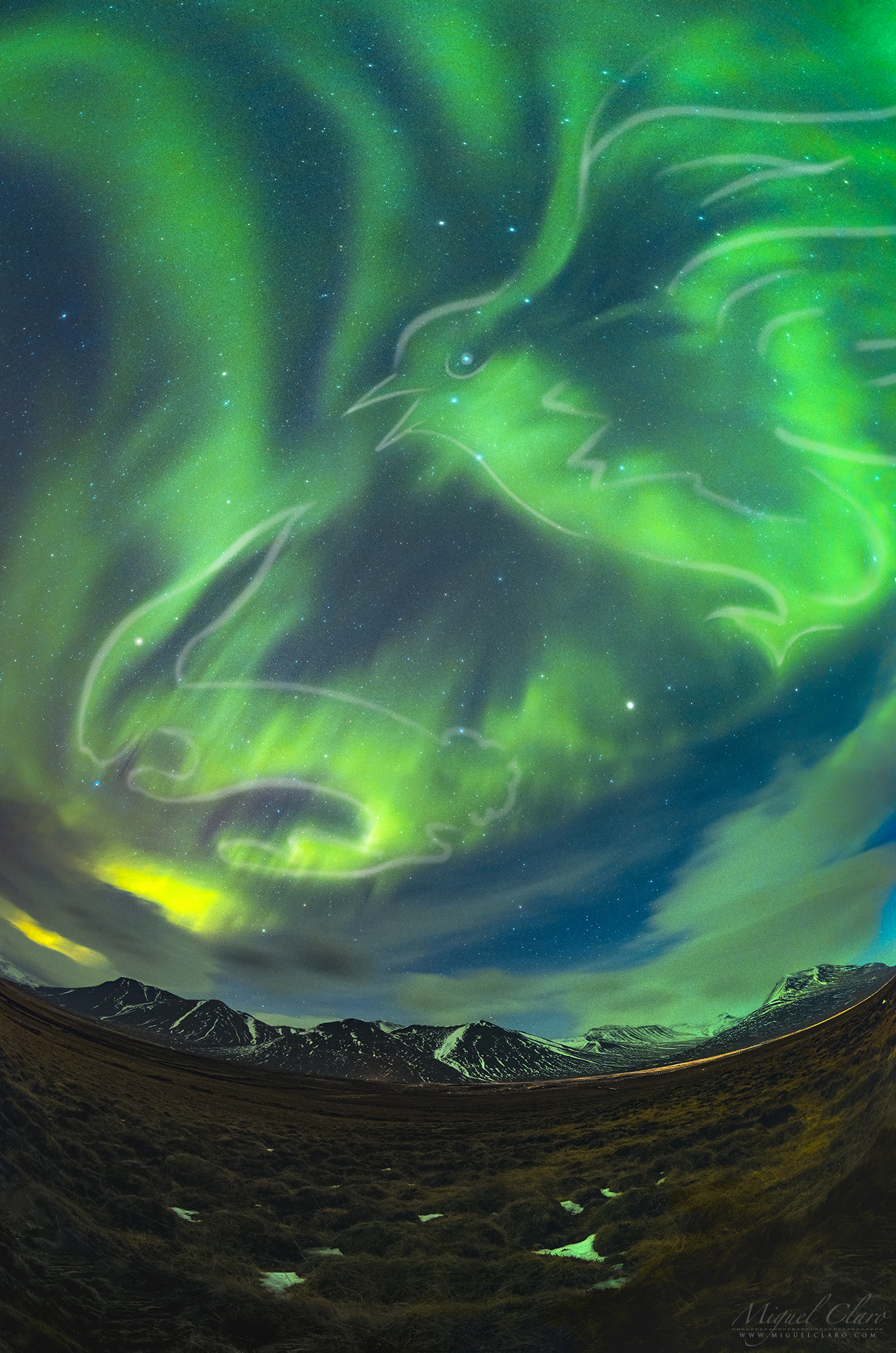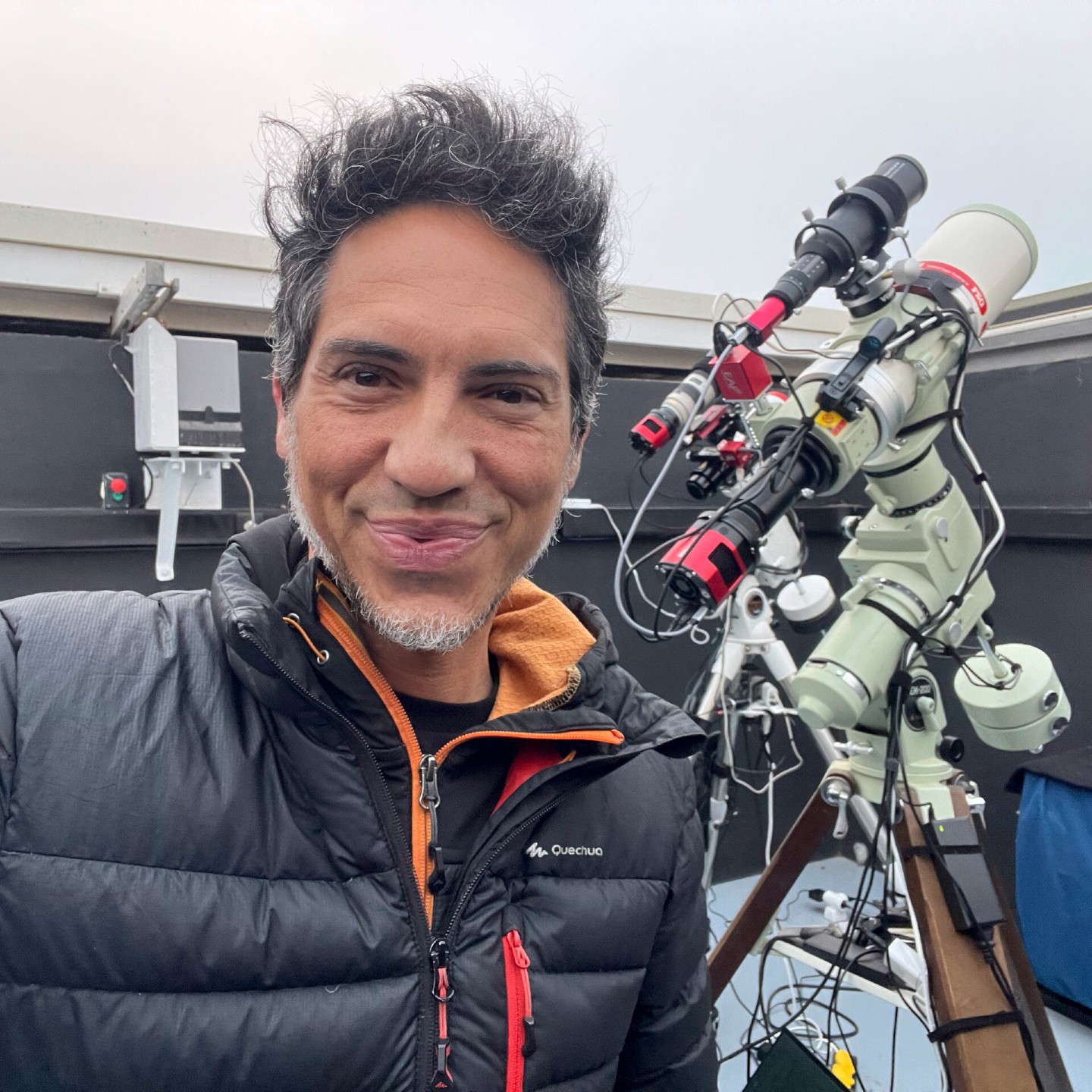Bright Green Aurora Bird Takes Flight with a Running Rabbit Over Iceland (Photo)
Miguel Claro is a professional photographer, author and science communicator based in Lisbon, Portugal, who creates spectacular images of the night sky. As a European Southern Observatory Photo Ambassador, a member of The World At Night and the official astrophotographer of the Dark Sky Alqueva Reserve, he specializes in astronomical "skyscapes" that connect Earth and the night sky. Join him here as he takes us through his photograph "Bright Greenish Aurora Shapes a Bird Flying with a Running Rabbit in an Epic Scene over Iceland."
Brilliant, green springtime auroras dance above snow-capped mountains in this night-sky photo taken from the Arctic Circle.
March is a great time to spot the northern lights, because Earth tends to be more geomagnetically active around the vernal and autumnal equinoxes. Auroras happen when the stream of charged particles flowing from the sun, or solar wind, breaks through Earth's magnetic field and interacts with the atmosphere, which causes it to glow.
Related: Aurora Photos: Amazing Northern Lights Display from Solar Storms
Scientists aren't quite sure why this happens more around the equinoxes, but one of the most prevailing hypotheses — known as the Russell-McPherron effect — suggests that during those times, more cracks are opening in the Earth's magnetic field, allowing the solar wind to penetrate more easily.
On March 27-28, a network of holes in the sun's atmosphere was facing Earth, "spewing a filamentary stream of solar wind in our direction," according to Spaceweather.com. I captured this photo of the northern lights on March 26.
Auroras can be seen in a wonderful variety of colors combined in different ways, forming beautiful and phantasmagoric shapes that can last for several minutes. The vertical panorama above seems to reveal one of these epic moments with the incredible shape of a bird flying with a running rabbit. In the background sky, the constellation Ursa Major (the Big Dipper) is well visible in the top center, with the star Alioth marking the "eye" of the bird. Below is an annotated version of the image with lines drawn over it, which helps to reveal this personal interpretation of the scene.
Breaking space news, the latest updates on rocket launches, skywatching events and more!
The vertical panorama consists of three frames captured with a Nikon D810a DSLR camera, using a wide-angle 14mm lens set to f/2,8, with an ISO 2500 and an exposure time of 15 seconds.
Editor's note: If you have an amazing night sky photo you'd like to share with us and our news partners for a possible story or image gallery, please contact managing editor Tariq Malik at spacephotos@space.com.
- How to See the Northern Lights: 2019 Aurora Borealis Guide
- NASA Sun Probe Spies the Solar Wind in 1st Birthday Photo
- Here's Why Auroras on Earth Are Different in the North and South
To see more of Claro's amazing astrophotography, visit his website: www.miguelclaro.com. Follow us on Twitter @Spacedotcom and on Facebook.
Miguel Claro is a professional photographer, author and science communicator based in Lisbon, Portugal, who creates spectacular images of the night sky. As a European Southern Observatory photo ambassador, a member of The World At Night and the official astrophotographer of the Dark Sky Alqueva Reserve, he specializes in astronomical skyscapes that connect Earth and the night sky.



